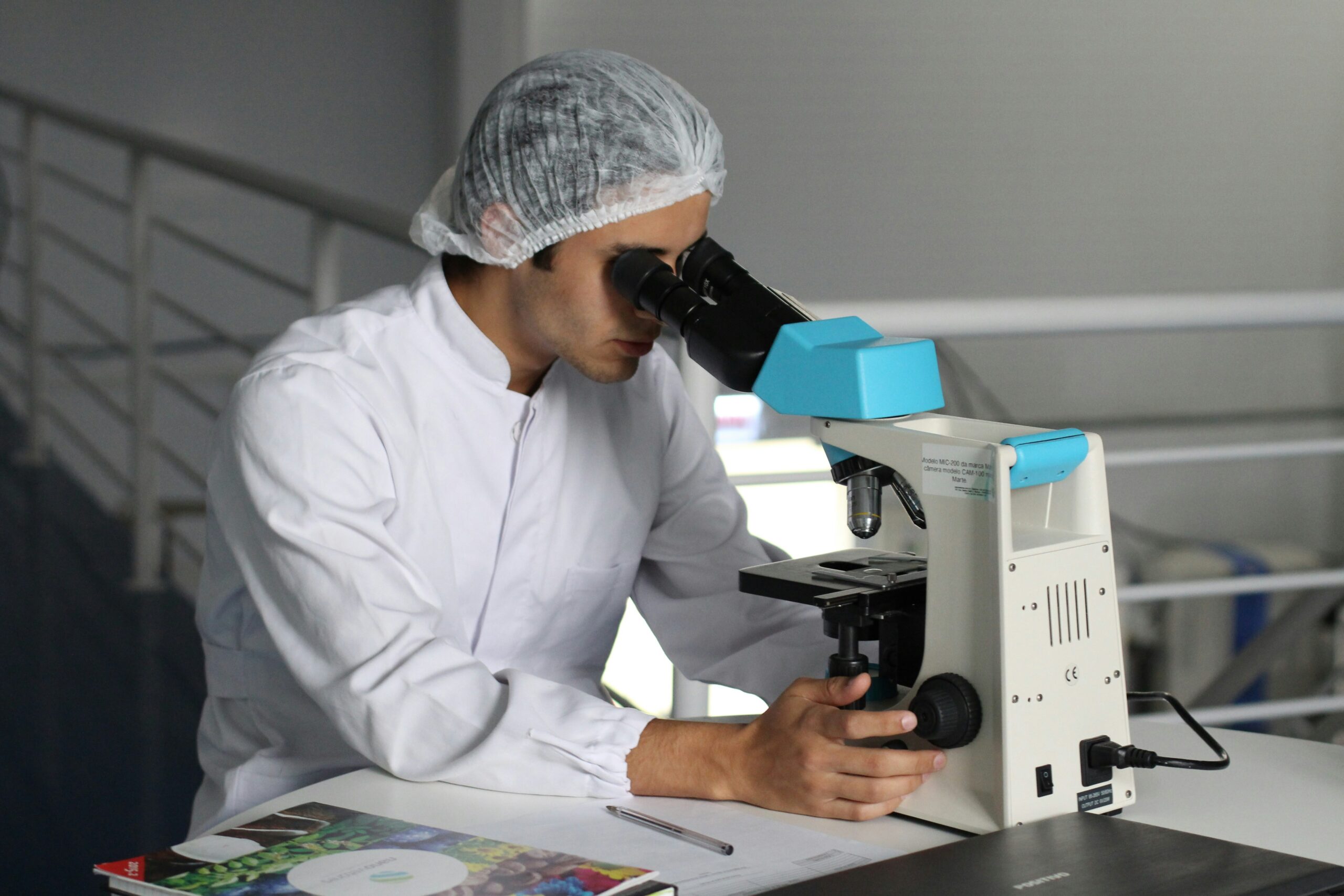Have you ever wondered what the medical term is for an enlarged prostate gland? Well, wonder no more! In the world of medicine, this condition goes by the name of benign prostatic hyperplasia (BPH). Whether you have recently been diagnosed or just have a curiosity about this common condition affecting men as they age, understanding the terminology can help demystify the topic. So, let's take a closer look at what BPH really means and how it can impact your health.

Understanding Prostate Gland Enlargement
What is a prostate gland?
The prostate gland is a small, walnut-sized gland located in the male reproductive system. It surrounds the urethra, which is the tube that carries urine from the bladder to the penis. The primary function of the prostate gland is to produce semen, the fluid that nourishes and transports sperm. It plays a vital role in male fertility and sexual function.
Role and functions of the prostate gland
Apart from semen production, the prostate gland also has other important functions. It secretes prostate-specific antigen (PSA), an enzyme that liquifies semen after ejaculation. The prostate gland also produces a protein called prostate-specific acid phosphatase (PSAP), which assists in the liquefaction process. Additionally, the prostate gland helps control urine flow by surrounding the urethra and exerting pressure to keep it closed during ejaculation, preventing urine from mixing with semen.
Medical Terminology for Enlarged Prostate
Introduction to BPH – Benign Prostatic Hyperplasia
The medical term for an enlarged prostate gland is Benign Prostatic Hyperplasia (BPH). “Benign” implies that the condition is non-cancerous, distinguishing it from prostate cancer. “Prostatic” refers to the prostate gland, and “Hyperplasia” means an excessive growth of cells. BPH occurs when the prostate gland grows larger than its normal size, putting pressure on the urethra and interfering with urine flow. It is a common condition in older men, with prevalence increasing with age.
Understanding the term ‘Hyperplasia'
Hyperplasia is a term used in medical jargon to describe the abnormal proliferation or increase in the number of cells in a particular organ or tissue. In the case of BPH, hyperplasia refers to the excessive growth of prostate cells, leading to an enlarged gland. This growth is not due to the presence of cancer and does not pose a significant threat to overall health. However, if left untreated, BPH can cause bothersome urinary symptoms and complications.
Symptoms of an Enlarged Prostate
Common physical symptoms
An enlarged prostate can result in a range of physical symptoms, which may vary in severity from person to person. Common symptoms include frequent urination, especially at night (nocturia), weak urine stream, dribbling after urination, difficulty initiating urine flow, the sensation of incomplete emptying of the bladder, and a persistent urge to urinate. These symptoms can significantly impact daily life and quality of sleep, leading to frustration, fatigue, and decreased productivity.
Unusual symptoms indicative of BPH
While the physical symptoms mentioned above are common, there are certain unusual symptoms that may suggest the presence of an enlarged prostate. These include blood in the urine (hematuria), recurrent urinary tract infections (UTIs), bladder stones, and acute urinary retention (inability to pass urine). It is important to pay attention to these symptoms and seek medical evaluation promptly to rule out any serious conditions and ensure appropriate treatment.
Causes of Prostate Gland Enlargement
Normal aging process and hormonal imbalance
One of the primary causes of prostate gland enlargement is the natural aging process. As men age, the balance of hormones in the body changes, particularly a decrease in testosterone levels and an increase in estrogen levels. This hormonal imbalance can result in the growth of prostate cells, leading to BPH. Other hormonal factors, such as the conversion of testosterone to dihydrotestosterone (DHT), also play a role in the development of an enlarged prostate.
Lifestyle and dietary factors
Certain lifestyle and dietary factors have been linked to an increased risk of developing an enlarged prostate. These include a sedentary lifestyle, obesity, smoking, excessive alcohol consumption, and a diet high in red meat and saturated fats. Conversely, maintaining a healthy weight, engaging in regular physical activity, quitting smoking, and consuming a diet rich in fruits, vegetables, and whole grains may help reduce the risk of BPH.
Genetic predisposition and family history
Genetics and family history also appear to play a role in the development of BPH. If your father or brother has had an enlarged prostate, you may be at a higher risk of developing the condition. Certain genetic variations and inherited factors can influence the growth and function of prostate cells. However, it is important to note that genetics is not the sole determining factor, and lifestyle choices still have a significant impact on the development and progression of BPH.

Risk factors and Complications of BPH
Potential health risks of having an enlarged prostate
While BPH itself is a non-cancerous condition, it can lead to various health risks if left untreated. The most common risks include urinary tract infections (UTIs), bladder stones, bladder damage, kidney damage, and acute urinary retention (a sudden and complete inability to urinate). These complications can cause significant discomfort and can lead to more serious health issues if not addressed promptly.
How BPH can affect urinary function
BPH can significantly impact urinary function due to the pressure exerted on the urethra by the enlarged prostate gland. This pressure can cause urinary symptoms such as weak urine flow, difficulty initiating urination, incomplete emptying of the bladder, and increased frequency and urgency to urinate. Over time, these symptoms can worsen, leading to more severe complications and affecting the overall quality of life.
Complications and health conditions linked with untreated BPH
Failure to diagnose and manage BPH can lead to complications and the development of other health conditions. Chronic urinary retention can result in damage to the kidneys and potentially lead to kidney failure. The persistent strain on the bladder caused by incomplete emptying increases the risk of UTIs and bladder stones. In severe cases, untreated BPH can even cause bladder or kidney damage, requiring invasive interventions and surgeries.
Diagnostic Tests for an Enlarged Prostate
Physical examination and history taking
The first step in diagnosing an enlarged prostate involves a thorough physical examination and a detailed history-taking by a healthcare professional. The doctor will ask about your symptoms, medical history, and any family history of prostate problems. They will also perform a rectal examination to assess the size, shape, and texture of the prostate gland.
Prostate-specific antigen (PSA) test
The prostate-specific antigen (PSA) test is a blood test used to measure the levels of PSA in the bloodstream. PSA is a protein produced by the prostate gland, and elevated levels in the blood can indicate prostate problems, including BPH. However, it is important to note that an elevated PSA level does not necessarily mean cancer, as BPH can also cause an increase in PSA levels.
Urinary flow test
A urinary flow test, also known as uroflowmetry, is a non-invasive test that measures the rate and volume of urine flow during urination. This test helps assess the strength and consistency of the urine stream, providing valuable information about the degree of obstruction caused by an enlarged prostate. It is a simple and painless test that can be done in the doctor's office.
Postvoid residual volume test
The postvoid residual volume test measures the amount of urine left in the bladder after urination. It can be performed using ultrasound or a catheter. An elevated postvoid residual volume indicates incomplete bladder emptying, which is a common symptom of BPH.
Invasive procedures – biopsy and cystoscopy
In certain cases, additional invasive procedures may be required to rule out other possible causes of urinary symptoms or to evaluate the severity of BPH. A prostate biopsy involves the removal of a small sample of prostate tissue to examine it for signs of cancer. Cystoscopy is a procedure in which a thin, flexible tube with a camera is inserted into the urethra and bladder to visually inspect the prostate and any potential obstructions.

Treatment Options for an Enlarged Prostate
Medications
Medications are often the first line of treatment for BPH. Alpha-blockers, such as tamsulosin or terazosin, relax the muscles in the prostate and bladder neck, improving urine flow. 5-alpha reductase inhibitors, such as finasteride or dutasteride, work by blocking the conversion of testosterone to DHT, reducing the size of the prostate gland. Combination therapy with both alpha-blockers and 5-alpha reductase inhibitors may be used for more severe cases.
Lifestyle changes
Making certain lifestyle changes can help manage BPH symptoms and improve overall prostate health. These include maintaining a healthy weight, engaging in regular physical activity, avoiding excessive fluid intake before bed, reducing caffeine consumption, and practicing techniques to manage stress. Avoiding smoking and limiting alcohol consumption can also have a positive impact on prostate health.
Minimally invasive procedures
In cases where medications alone are not effective in relieving symptoms, minimally invasive procedures may be recommended. These procedures aim to reduce the size of the prostate gland or alleviate urinary obstruction without major surgery. Examples of minimally invasive procedures include transurethral microwave therapy (TUMT), transurethral needle ablation (TUNA), and prostatic urethral lift (UroLift).
Surgery
Surgery is typically reserved for severe cases of BPH or when other treatment options have failed to provide relief. Transurethral resection of the prostate (TURP) is the most common surgical procedure for BPH. During TURP, the excess prostate tissue blocking the urethra is removed using a special instrument inserted through the penis. Other surgical options include laser prostate surgery and open prostatectomy.
Dealing with BPH: Patient's Perspective
Living with an enlarged prostate
Living with an enlarged prostate can have a significant impact on a person's daily life and overall well-being. The urinary symptoms associated with BPH can cause frustration, embarrassment, and social withdrawal. It is crucial for individuals with BPH to seek medical advice, follow the prescribed treatment plan, and make necessary lifestyle modifications. Understanding the condition, managing stress, and seeking support from healthcare professionals and support groups can help individuals cope with the challenges.
Improving quality of life despite having BPH
Although BPH can present many challenges, there are steps individuals can take to improve their quality of life. Managing urinary symptoms through medications, lifestyle changes, and minimally invasive procedures can greatly alleviate discomfort and improve urinary function. Practicing good self-care, maintaining a positive mindset, and staying connected with loved ones can contribute to overall well-being while navigating life with BPH.
Patient testimonials and case studies
Many individuals have successfully managed their BPH and regained control over their lives. Patient testimonials and case studies provide valuable insights into the experiences, challenges, and successes of others with similar conditions. Learning from these stories can inspire and empower individuals to take charge of their health, seek appropriate treatment, and implement effective strategies to improve their quality of life.
Prevention of Prostate Gland Enlargement
Screening and early detection
Regular screening and early detection are crucial in preventing the development and progression of BPH. Men should be aware of the potential risks and symptoms associated with an enlarged prostate and should seek medical attention promptly if they experience any concerning urinary symptoms. Routine screenings, including a digital rectal examination and a PSA blood test, can help detect any abnormalities at an early stage.
Healthy lifestyle and diet
Adopting a healthy lifestyle and maintaining a balanced diet can play a significant role in preventing prostate gland enlargement. Regular exercise, maintaining a healthy weight, and getting adequate rest and sleep are important factors in prostate health. A diet rich in fruits, vegetables, whole grains, lean proteins, and healthy fats can provide essential nutrients and antioxidants that support prostate function and regulate hormone levels.
Physical activity and weight control
Engaging in regular physical activity is not only beneficial for overall health but also for prostate health. Exercise helps improve circulation, reduce inflammation, and maintain a healthy weight. Maintaining a healthy weight is particularly important, as obesity has been linked to an increased risk of BPH and its associated complications.
Current Research and Future Perspectives on BPH
Latest medical research on BPH
Ongoing research on BPH aims to further understand the underlying causes, improve diagnostic methods, and develop more effective treatments. Scientists are studying the molecular mechanisms involved in prostate growth and the role of inflammation in BPH development. Advancements in imaging techniques and genetic testing may lead to more accurate and personalized diagnostics, allowing for targeted treatments.
Innovative treatments and therapies in the pipeline
Several innovative treatments and therapies are currently being explored as potential alternatives or adjuncts to traditional BPH treatments. These include water vapor therapy, prostatic artery embolization, and the use of stem cells or tissue engineering to regenerate prostate tissue. These emerging therapies show promising results in early studies and may offer new options for individuals with BPH in the future.
Challenges and potential solutions
While progress is being made in the field of BPH research and treatment, there are still challenges to overcome. One major challenge is the lack of awareness and reluctance among men to seek medical advice for urinary symptoms. Improved education and awareness campaigns are needed to encourage early detection and intervention. Additionally, the cost and accessibility of advanced treatment options can be a barrier for some individuals, and efforts to make novel therapies more accessible and affordable are necessary.
In conclusion, understanding prostate gland enlargement, its causes, symptoms, and treatment options is crucial for individuals at risk or already diagnosed with an enlarged prostate. With timely diagnosis, appropriate medical care, and lifestyle modifications, individuals can effectively manage BPH, minimize complications, and improve their overall quality of life. Ongoing research and advancements in diagnostics and therapeutics offer hope for more innovative and personalized treatments in the future. By taking a proactive approach to prostate health, individuals can ensure a healthy and fulfilling life while living with an enlarged prostate.

